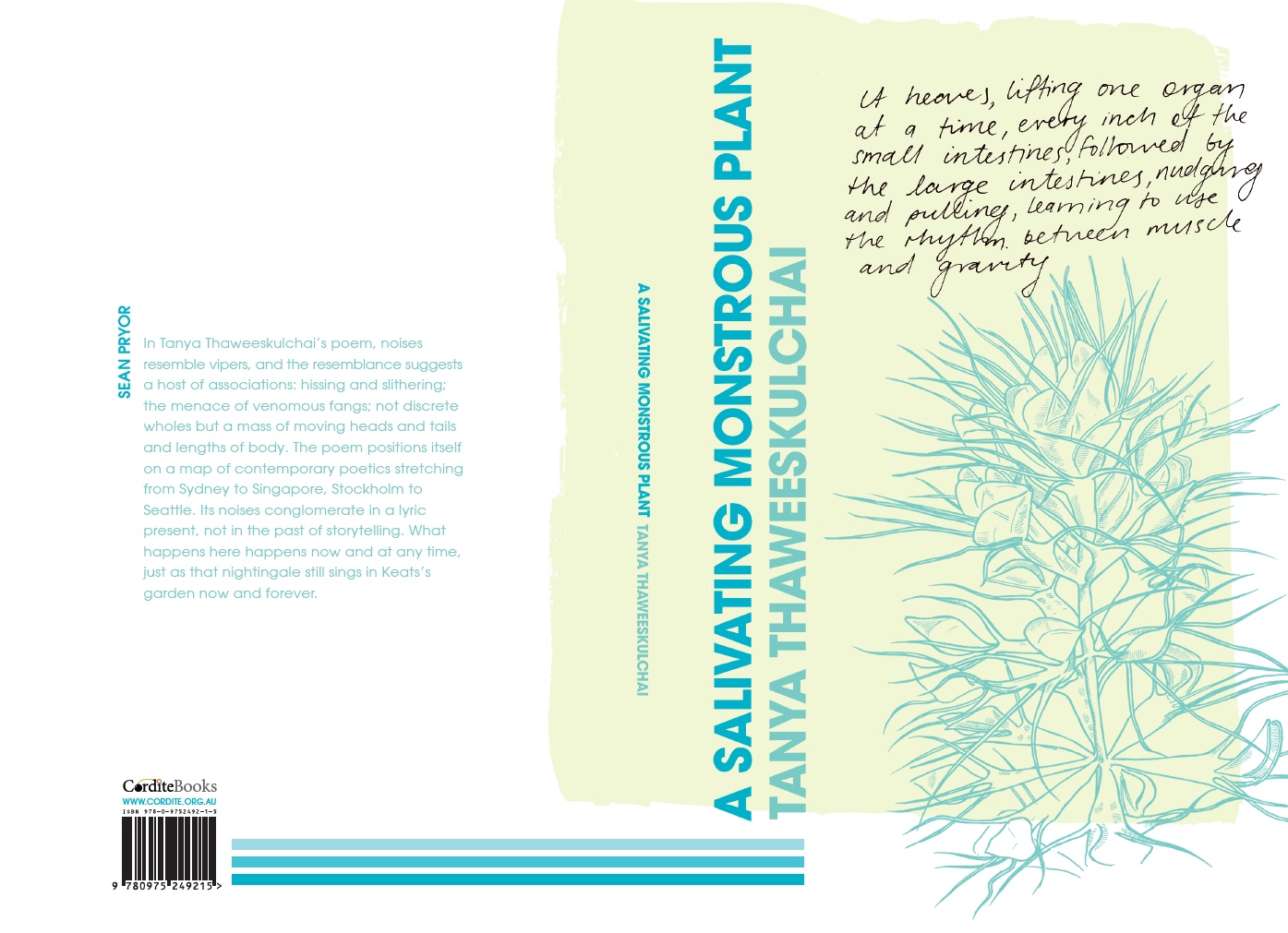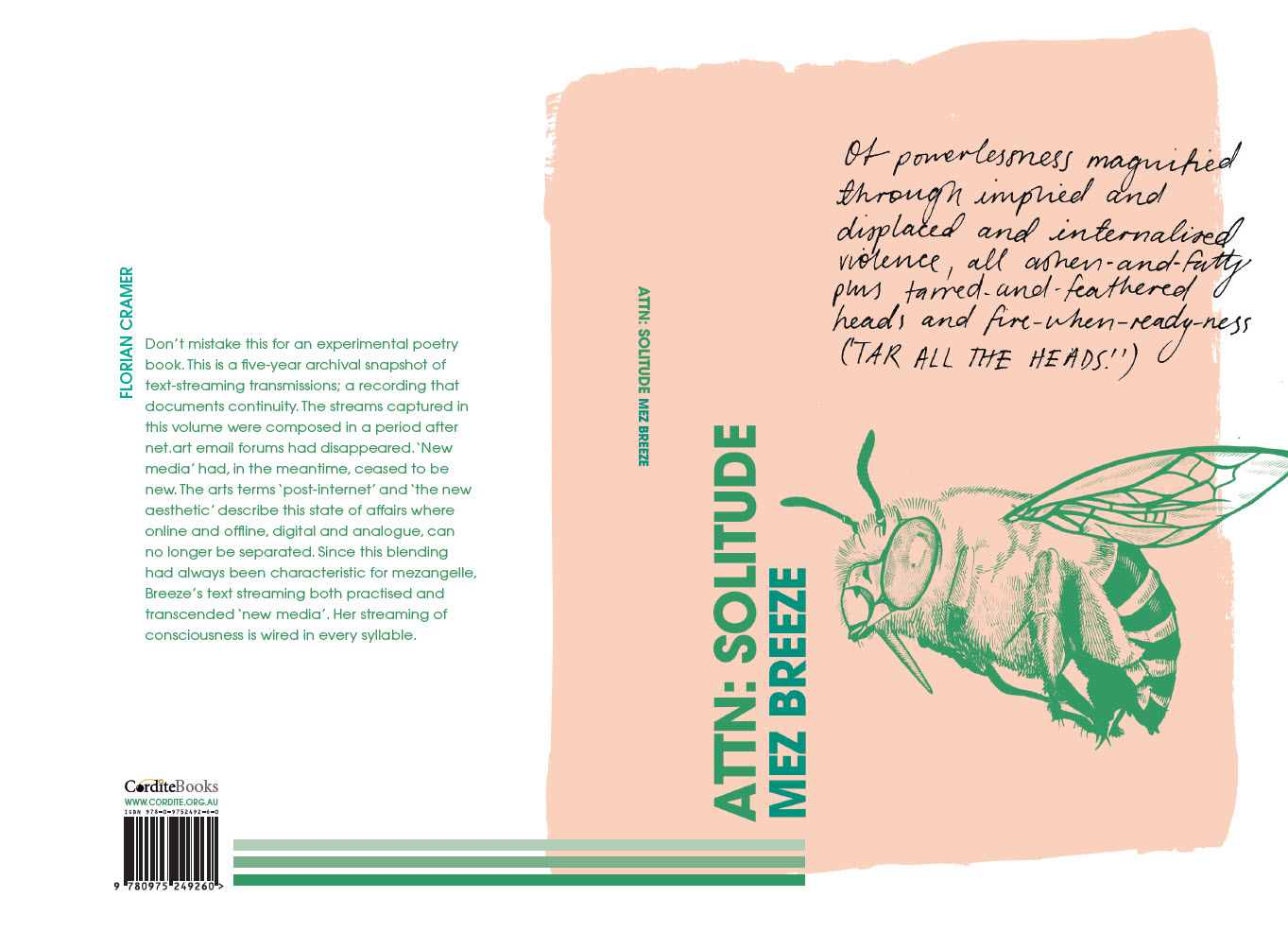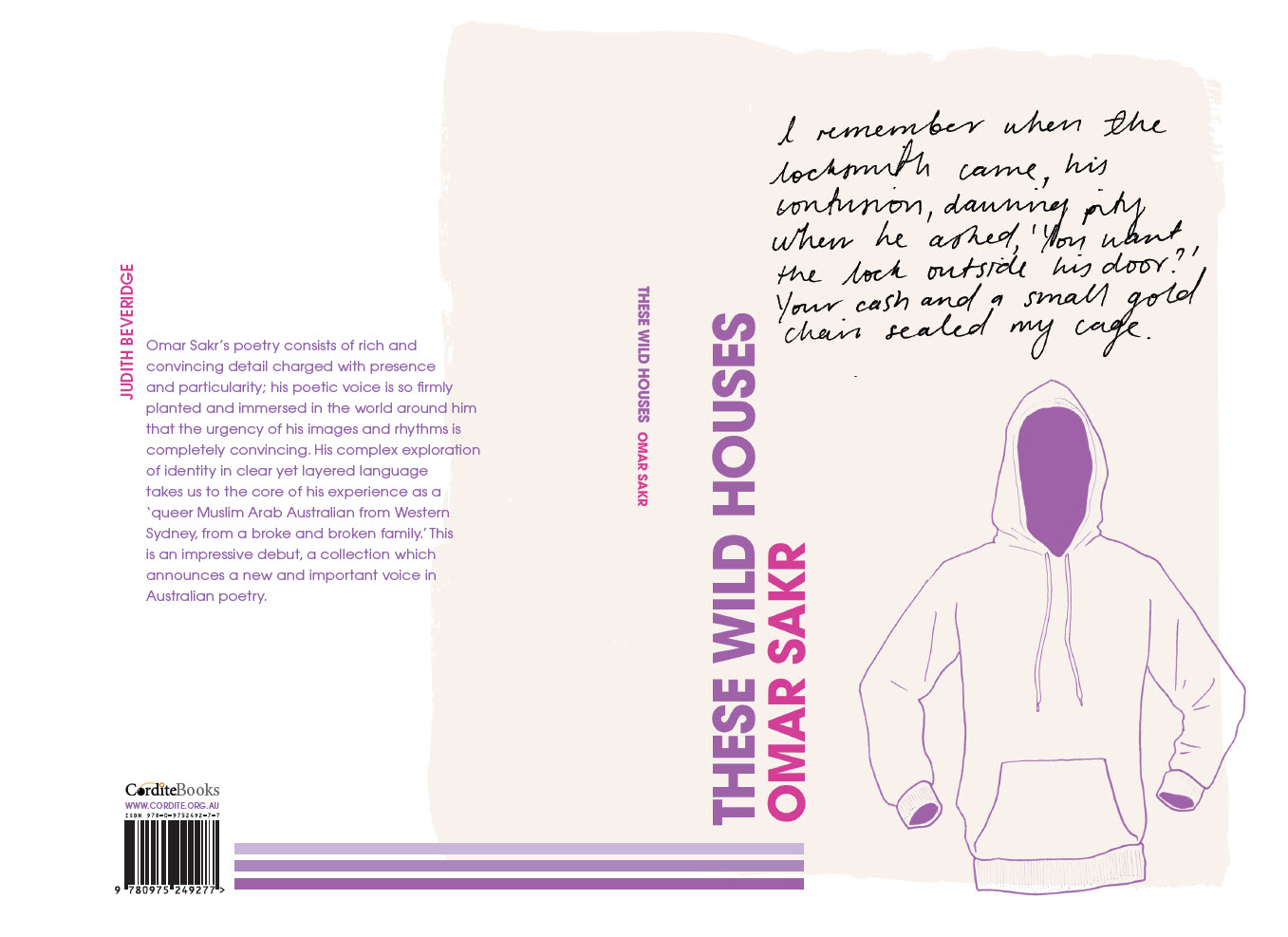- 113: INVISIBLE WALLSwith A Walker & D Disney 112: TREATwith T Dearborn 111: BABYwith S Deo & L Ferney 110: POP!with Z Frost & B Jessen 109: NO THEME 12with C Maling & N Rhook 108: DEDICATIONwith L Patterson & L Garcia-Dolnik 107: LIMINALwith B Li 106: OPENwith C Lowe & J Langdon 105: NO THEME 11with E Grills & E Stewart 104: KINwith E Shiosaki 103: AMBLEwith E Gomez and S Gory 102: GAMEwith R Green and J Maxwell 101: NO THEME 10with J Kinsella and J Leanne 100: BROWNFACE with W S Dunn 99: SINGAPOREwith J Ip and A Pang 97 & 98: PROPAGANDAwith M Breeze and S Groth 96: NO THEME IXwith M Gill and J Thayil 95: EARTHwith M Takolander 94: BAYTwith Z Hashem Beck 93: PEACHwith L Van, G Mouratidis, L Toong 92: NO THEME VIIIwith C Gaskin 91: MONSTERwith N Curnow 90: AFRICAN DIASPORAwith S Umar 89: DOMESTICwith N Harkin 88: TRANSQUEERwith S Barnes and Q Eades 87: DIFFICULTwith O Schwartz & H Isemonger 86: NO THEME VIIwith L Gorton 85: PHILIPPINESwith Mookie L and S Lua 84: SUBURBIAwith L Brown and N O'Reilly 83: MATHEMATICSwith F Hile 82: LANDwith J Stuart and J Gibian 81: NEW CARIBBEANwith V Lucien 80: NO THEME VIwith J Beveridge 57.1: EKPHRASTICwith C Atherton and P Hetherington 57: CONFESSIONwith K Glastonbury 56: EXPLODE with D Disney 55.1: DALIT / INDIGENOUSwith M Chakraborty and K MacCarter 55: FUTURE MACHINES with Bella Li 54: NO THEME V with F Wright and O Sakr 53.0: THE END with P Brown 52.0: TOIL with C Jenkins 51.1: UMAMI with L Davies and Lifted Brow 51.0: TRANSTASMAN with B Cassidy 50.0: NO THEME IV with J Tranter 49.1: A BRITISH / IRISH with M Hall and S Seita 49.0: OBSOLETE with T Ryan 48.1: CANADA with K MacCarter and S Rhodes 48.0: CONSTRAINT with C Wakeling 47.0: COLLABORATION with L Armand and H Lambert 46.1: MELBOURNE with M Farrell 46.0: NO THEME III with F Plunkett 45.0: SILENCE with J Owen 44.0: GONDWANALAND with D Motion 43.1: PUMPKIN with K MacCarter 43.0: MASQUE with A Vickery 42.0: NO THEME II with G Ryan 41.1: RATBAGGERY with D Hose 41.0: TRANSPACIFIC with J Rowe and M Nardone 40.1: INDONESIA with K MacCarter 40.0: INTERLOCUTOR with L Hart 39.1: GIBBERBIRD with S Gory 39.0: JACKPOT! with S Wagan Watson 38.0: SYDNEY with A Lorange 37.1: NEBRASKA with S Whalen 37.0: NO THEME! with A Wearne 36.0: ELECTRONICA with J Jones
CONTRIBUTORS
Alissa Dinallo
Introduction to Jeanine Leane’s Walk Back Over
 In Walk Back Over, Wiradjuri woman – read: poet, academic, historian, teacher – Jeanine Leane takes off our wallpaper to reveal the personal and political layers of a nuanced history.
In Walk Back Over, Wiradjuri woman – read: poet, academic, historian, teacher – Jeanine Leane takes off our wallpaper to reveal the personal and political layers of a nuanced history.
Posted in INTRODUCTIONS
Tagged Alissa Dinallo, Ellen van Neerven, Jeanine Leane
Introduction to Anne Elvey’s White on White
 What is happening in these poems? Or do I mean what happens to us, the readers? But which ‘us’? And what reader? I am not really talking about feeling, although who couldn’t, wouldn’t, feel when ‘School Days’ – a poem that records every detail of white skin and soul, sun-warmed government-issue school milk and British ritual in one colonial Australian home – has another child, likely an Indigenous Australian child, stolen ‘while waiting for a train’.
What is happening in these poems? Or do I mean what happens to us, the readers? But which ‘us’? And what reader? I am not really talking about feeling, although who couldn’t, wouldn’t, feel when ‘School Days’ – a poem that records every detail of white skin and soul, sun-warmed government-issue school milk and British ritual in one colonial Australian home – has another child, likely an Indigenous Australian child, stolen ‘while waiting for a train’.
Posted in INTRODUCTIONS
Tagged Alissa Dinallo, Anne Elvey, Katrina Schlunke
Introduction to Tanya Thaweeskulchai’s A Salivating Monstrous Plant
 The greatest thing, writes Aristotle in the Poetics, is the command of metaphor, an eye for resemblances. The first overt metaphor in Tanya Thaweeskulchai’s A Salivating Monstrous Plant appears in its second sentence: ‘These noises conglomerate, building like a nest of waking vipers’.
The greatest thing, writes Aristotle in the Poetics, is the command of metaphor, an eye for resemblances. The first overt metaphor in Tanya Thaweeskulchai’s A Salivating Monstrous Plant appears in its second sentence: ‘These noises conglomerate, building like a nest of waking vipers’.
Posted in INTRODUCTIONS
Tagged Alissa Dinallo, Lily Mae Martin, Sean Pryor, Tanya Thaweeskulchai
Introduction to Matthew Hall’s False Fruits
 Fruit is the apogee of the pastoral. It’s what the work, the waiting, the ritual and the thanks are for. But the making of fruit is costly and even the ‘natural’ cycle of things will be managed so some factors are privileged over others. In this cycle of post-lyrical poems, Hall questions the form and circumstances of these factors. What are they?
Fruit is the apogee of the pastoral. It’s what the work, the waiting, the ritual and the thanks are for. But the making of fruit is costly and even the ‘natural’ cycle of things will be managed so some factors are privileged over others. In this cycle of post-lyrical poems, Hall questions the form and circumstances of these factors. What are they?
Posted in INTRODUCTIONS
Tagged Alissa Dinallo, John Kinsella, Lily Mae Martin, Matthew Hall
Introduction to Mez Breeze’s Attn: Solitude
 In the 1990s and early 2000s, Mez Breeze’s mezangelle language needed explication. People who were unfamiliar with internet and new media culture did not get the references. Those who were already immersed in this culture often considered it a separate realm, a cyberspace, and thus had difficulties with the blending of the digital and the physical, technology and embodiment, code and subjectivity in Mez’s writings.
In the 1990s and early 2000s, Mez Breeze’s mezangelle language needed explication. People who were unfamiliar with internet and new media culture did not get the references. Those who were already immersed in this culture often considered it a separate realm, a cyberspace, and thus had difficulties with the blending of the digital and the physical, technology and embodiment, code and subjectivity in Mez’s writings.
Posted in INTRODUCTIONS
Tagged Alissa Dinallo, Florian Cramer, Lily Mae Martin, mez breeze
Introduction to Derek Motion’s The Only White Landscape
 The Only White Landscape is melancholic, in this Wilsonian sense. The poems are scenes of ambivalence and loss, moving between states of recollection and projection, regret and desire, clarity and obscurity. There are preoccupations that link the poems across the collection: bodies (and the clothes they wear, the language of their presence and absence), light (and its close relationship to time), administration (and the twin labours of work and home).
The Only White Landscape is melancholic, in this Wilsonian sense. The poems are scenes of ambivalence and loss, moving between states of recollection and projection, regret and desire, clarity and obscurity. There are preoccupations that link the poems across the collection: bodies (and the clothes they wear, the language of their presence and absence), light (and its close relationship to time), administration (and the twin labours of work and home).
Posted in INTRODUCTIONS
Tagged Alissa Dinallo, Astrid Lorange, derek motion, Lily Mae Martin
Introduction to Omar Sakr’s These Wild Houses
 Omar Sakr’s These Wild Houses is a complex exploration of identity, an identity exposed in clear yet layered language, a language that takes us to the core of what he has experienced as a ‘queer Muslim Arab Australian from Western Sydney, from a broke and broken family.’
Omar Sakr’s These Wild Houses is a complex exploration of identity, an identity exposed in clear yet layered language, a language that takes us to the core of what he has experienced as a ‘queer Muslim Arab Australian from Western Sydney, from a broke and broken family.’
Posted in INTRODUCTIONS
Tagged Alissa Dinallo, Judith Beveridge, Lily Mae Martin, Omar Sakr













